7+ SAMPLE Project Cost Management
-
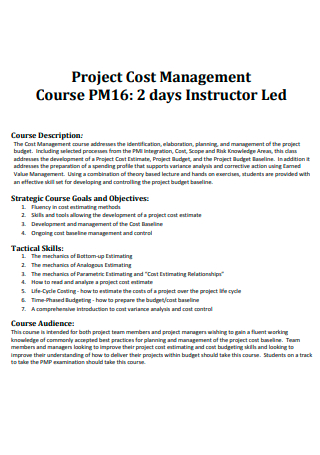
Basic Project Cost Management
download now -
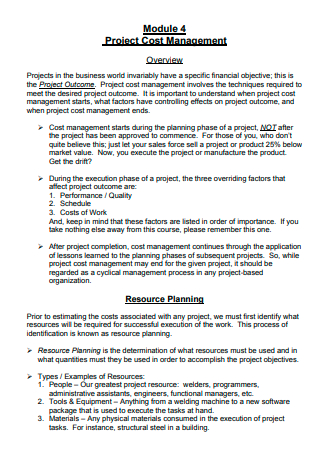
Project Cost Management Example
download now -
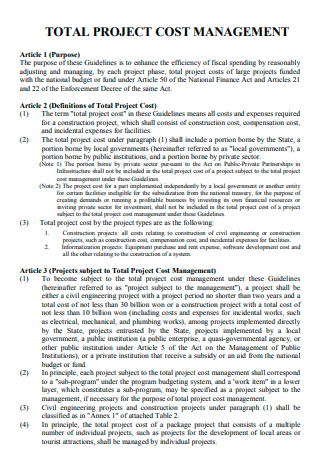
Total Project Cost Management
download now -
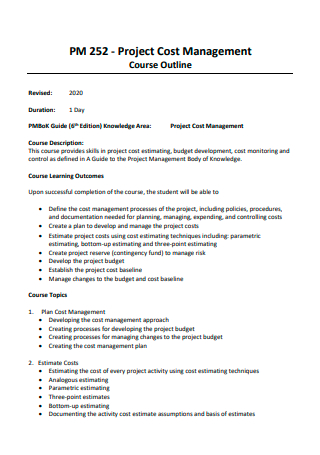
Project Cost Management Course Outline
download now -

Project Cost and Schedule Management
download now -
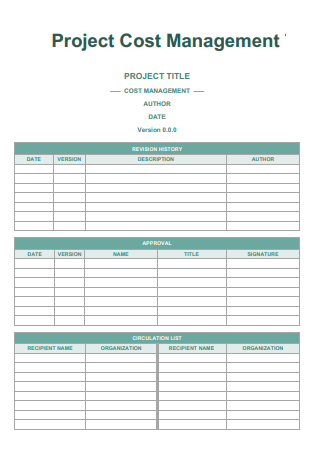
Simple Project Cost Management
download now -
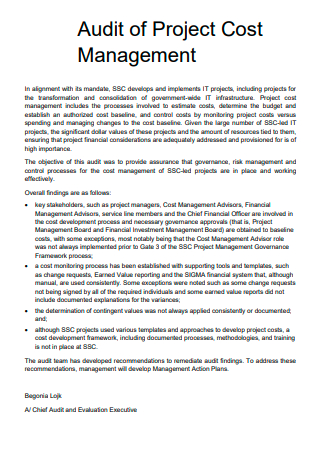
Audit of Project Cost Management
download now -
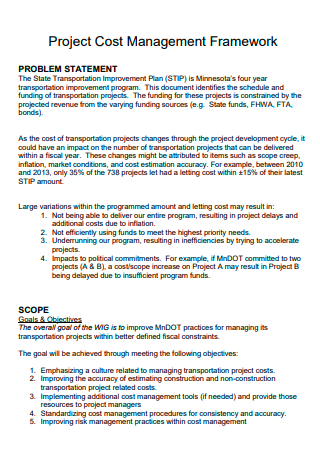
Project Cost Management Framework
download now
What Is Project Cost Management?
Project cost management is the process of organizing, analyzing, budgeting, and managing project costs. Cost management practices are in place to assist project teams in budget planning and control throughout the project life cycle. Cost management results in improved planning and Financial management, as well as increased security and budget visibility, allowing decisions to be taken before incurring debt. In brief, expenses are significant in business since they are what drain a company’s profits and make the difference between a successful and a poor net profit. You can utilize the provided project management cost analysis template so you can have a format at the ready.
Types of Project Cost Management
There are different types of project cost management that you will need to be aware of before jumping right into the action of preparing the document. Give this curated list a read to be knowledgeable on the various types. Keep in mind that the goal is to make the project scheduling and Cost management be easier to deal with.
Tips for Managing Project Costs
Before you jump right into making an estimate, you have to meet up with your team and get a clear understanding of what specific numbers would go into the document. As you create a reasonable estimate with your team, make certain that it covers all phases and activities of the project and includes adequate contingency. Include all personnel expenditures, as well as materials, hardware, and software. Reading this curated list of tips will help to inform you as you start the project cost management processes.
How to Write a Project Cost Management
While cost management is a complex process and a vital project management knowledge area in general, this article may reduce it down into four steps that you can use to guarantee each of these parts is adequately completed. As you view the available project cost management example, you can utilize it when you are writing the project cost management plan. Keep in mind that you will need to edit out the already made templates available in this article as the contents may not apply directly to your project.
1. Project Resource Planning
Outlining the resources required to execute all project tasks is the first stage in cost control. A good place to start is by noting previous information and similar initiatives that will help you calculate the resources needed. Make careful to account for additional resources such as labor and time necessary to complete the work. People such as employees and contractors are examples of resources, as are infrastructure, huge construction trucks, and other specialized equipment in short supply. By using this task-level method, project managers may create a precise and full inventory of all resources, which is then used as an input in the following phase of estimating costs.
2. Cost Estimation
The process of estimating the costs associated with each of the resources necessary for all scheduled activities is known as the cost estimate. The cost of executing a project within a specific scope is forecasted through cost estimation. Cost estimating is not a one-time exercise since the scope of a project changes over time. Project managers must iterate on cost estimates whenever scope modifications or change requests are authorized for effective cost management. These estimates represent a total of all expenses associated with effectively completing a project, from start to finish.
3. Cost Budget
Cost estimates directly lead to cost budgets. In this stage, you will calculate the project’s cost baseline and financial requirements. A strong project budget can assist you in making critical decisions regarding the project timeline and resource allocation limits. Combine individual activity cost estimates into a total project cost, determine cost timing, and track project progress against the estimated baseline costs. This includes everything from direct labor expenses to material costs, manufacturing costs, equipment costs, administrative expenses, and software costs.
4. Cost Control
To avoid scope creep, good project managers will closely monitor project costs. This involves keeping an eye on where the actual cost differs from the predicted cost. Cost control also entails advising stakeholders of cost anomalies that differ significantly from the anticipated cost. Budget control necessitates knowledge of the initial budget, authorized expenses, predicted costs, actual costs, and committed costs. If the scope adjustments or unanticipated risks have an impact on the agreed budgets, the project manager must assess the amount of impact and take remedial action as necessary.
FAQs
What is the primary objective of project cost management?
Cost project management is critical to the project planning process of any firm. Accenture, a global services firm, thinks that sustainable cost management should be part of the company’s structure. Without a specific budget, you cannot adequately plan out the resources necessary for your project. If you are remodeling an office building, for example, you must engage an architect, pay for building supplies, and agree on hourly rates for construction workers. To do so, you must precisely estimate all expenditures and guarantee that you have the funds to cover them.
What is cost management in project management?
Cost management is the process that involves estimating, allocating, and controlling project spending. The cost management method enables a company to forecast future expenditures and so limit the likelihood of budget overruns. Cost estimates are created throughout the project planning phase and must be approved before work can begin. As the Project Plan is carried out, expenses are documented and tracked to ensure that costs are kept within the budget. When the project is finished, the expected and actual costs are compared, giving standards for future cost management specifications of the project budgets.
Who is in charge of project cost management?
Cost project management is the responsibility of project managers. As part of their employment, they must estimate overall expenses, create a budget, track spending, and plan for potential dangers. To stay within budget and enhance profitability, a project manager must be watchful throughout the cost management process. Project managers are in high demand. According to the Project Management Institute, there will be 22 million new project management job positions by 2027. Project leadership is necessary for a variety of industries. Being a project manager entails more than just academic credentials. While there are several qualifications available, having a degree is not essential.
You have reached the end of the article which marks you as ready to dig into writing the project cost management. Keep in mind that the cost control in project cost management is important so that your company does not exceed the necessary amount that has been set for the project.
